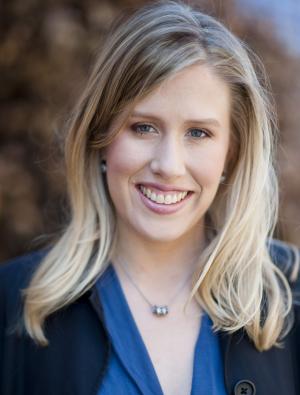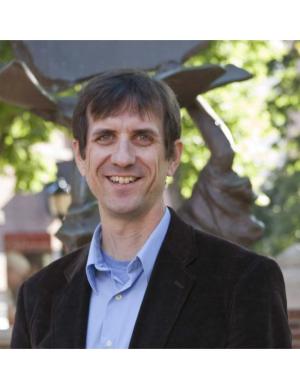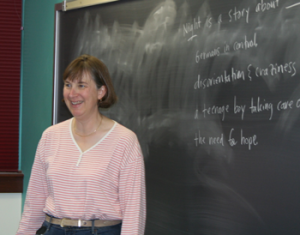Resources

Sex, money, politics: all the things we are told not to talk about. However, as the ethics professor at an Episcopal/Anglican seminary which draws diverse students from across the theological spectrum, teaching on these controversial issues is an important and challenging part of my job. As a professor, it’s easy for me to believe that my responsibility in teaching on controversial issues extends only to giving a compelling lecture or leading an animated discussion. However, unless controversial issues are presented in a context in which the students and I are open to learning and changing, there is always a risk that the class simply confirms the students who already agreed with me in their convictions and alienates the students who disagree, making their future openness to change even less likely. Rather, true transformational pedagogy requires not just teaching concepts, but incorporation into a community which creates the conditions for transformation. In February of 1940, Dorothy Day considered the transformation required in order for the members of the Catholic Worker to confront the difficulties of working for “a new heaven and a new earth, wherein justice dwelleth.” Day described how this work depends on God’s grace, but also demands radical change on the part of the human participants. In fact, it requires “indoctrination”—bringing people into the doctrine of the “mystical body of Christ.” Indoctrination is not simply the reception of information, but actual incorporation—becoming one body—with the community. Incorporation requires formation, which is achieved in part through shared practices such as worship (daily attendance at Mass and communal rosaries), community (carried out in kitchens and at the table), and external engagement (political activism and care of the poor). In the rest of this post, I will consider how these same practices are key for developing a community in which transformative pedagogy regarding controversial issues is possible. First, Day examines how the practice of worship highlights the “correlation” between the spiritual and the material while also emphasizing the primacy of the spiritual. Looking beyond the physical to the spiritual expands the imagination by “quicken[ing] the perceptions” to appreciate other material and spiritual experiences than one’s own. Creating fertile ground for engagement with controversial issues in the classroom requires exactly this type of transformation of the imagination. In addition, worship teaches patience and charity. Confronting our own limitations in contrast to God’s goodness should ensure that “we will not lose faith in those around us, no matter how stumbling their progress is.” In Christian seminaries in a liturgical tradition such as my own, communal practices of worship provide the perfect opportunity to encourage students to look beyond their material circumstances to seek “the presence of God” in their analysis of controversial issues. However, any pedagogical practices which move students beyond the classroom into a mode of reflective engagement—with the beauty of art or nature especially—can also prove valuable resources in a nonreligious or interfaith setting for transformation of imagination and expansion of perspective. Day’s description of the communal practices of kitchen and table point to the context which prepares people to engage with controversial questions. In the time of COVID, we have come to realize how important eating together is to create the bond and trust required for vulnerability. In addition, the cooperation of cooking together or other shared creative activities strengthen and reinforce a communal bond. Creating space for students to engage in these types of activities, whether as a whole class or in small groups, creates the conditions for true openness regarding challenging issues. Through these communal practices, students and professors begin to experience the reality of their identity as a communal body. Like a body, students incorporated in the community will start to feel the hurts and joys of one another as their own—preparing them to approach controversial questions which impact the lives of others with new empathy and urgency. Finally, Day describes the practices of service and activism which are the outgrowth of communal and spiritual practices. These actions, especially those which engage the community in service with the poor, build on the first two categories, as well as providing the end which guides them. Of course, these practices are more easily obtained in service-learning programs. However, even taking advantage of opportunities to genuinely serve others in the community can enhance solidarity within the community while also expanding the participants’ awareness of the sorrows and challenges of the world. Through shared engagement in these practices, students and professor gain a deeper understanding of the impact of controversial questions on people’s lives, confront the limited nature of solutions currently available, and come to appreciate the need not only for knowledge, but action. Will all these practices make teaching controversial issues easier? Not necessarily. In fact, they may complicate emotional engagement and can add to the administrative burden. In addition, they require the professor to surrender pedagogical illusions of grandeur or omniscience. However, as Day reminds us, “little works” matter, and through these small practices both we and our students may change and ultimately grow.

The first religion course I took in college was an introduction to the Bible, one of two required religion courses in our core curriculum. The students’ reaction to the course follows what, I suspect, is familiar terrain for those who teach similar courses. The application of academic tools to the study of their sacred text was, for many students, unsettling; for some, inappropriate and heretical; and, for others, “meh” -- that is, not even curious as to why this tension might show something about their lives or the world we inhabit. I am reminded of that experience each time I teach our required service-learning course. The use of critical academic tools to examine acts of kindness, charity, and compassion is experienced by students as unsettling, inappropriate, political… despite the fact that, like the introduction to the Bible course, this critical approach to service is not new. With the changing religious landscape shaping the experiences of incoming students as well as the diminished place of religion courses in many university curricula, courses involving service-learning may increasingly become the primary sites for introducing critical theories to deconstruct problematic notions of ethical action in the world. The service-learning course I teach most often involves a short-term study abroad component in South Africa. For our students, everything about that course is new; and, as is so often the case, my passion for the topic and the transformative potential of the experience results in an overstuffed bag of history, social theory, religious studies, contemporary politics, peace and reconciliation studies, global health, music, and, somewhere in there global service learning – or, as freshly minted clergy know it as: trying to preach the whole of the Bible in your first sermon. One of the primary methods of assessment typical in these courses is reflective journaling, both prior to and during the trip. It affords an opportunity to see the students’ integration of course materials and their expectations and experiences. These journals also serve to focus evening debriefs while traveling – a kind of focus neither I nor the students are able to achieve during the fragmented nature of a full course load on campus. What do these reflective, real-time reflections consistently reveal? Many students struggle with their newly acquired critical perspective on service, especially when pressed on the (in)appropriateness of doing short-term service learning with children from other countries. The conceptual frame of white/western savior throws into turmoil service identities that have been formed throughout childhood and reinforced by the accumulation of a kind of social capital that finds purchasing power on college applications. (Is it surprising that students who have spent years curating a college resume to cater to our institutions’ premium on volunteering and quantifiable service hours find critical examination of service disorienting?) I have tried a variety of strategies intended to hold together processes of learning and unlearning, or at a minimum suspending one’s previous learning long enough to consider a new perspective. The goal in these strategies is to induce experiences constructive cognitive dissonance and creative disruption, without inducing irreparable irruption. Some strategies, like the use of satire, I test out with trepidation, aware that my own appreciation for the poignancy of the satirical critique draws deeply from an academic literature that remains opaque to the students. (In the case of sub-Saharan Africa, videos by the group Radi-Aid have made consistent cameos in my classes, serving as conversation starters. They also remind me of how problematic, yet persistent cultural tropes about Africa and famine from my childhood in the ‘80s that pricked my conscience then can be critically examined now in ways that re-center the agency of persons who were the objects of international displays of pity.) Other strategies include the move from general reflection to more structured, guided journal entries that invites students to engage directly and critically with their assumptions about volunteering and service abroad; required completion of an in-depth, case study based ethical volunteer module prior to the trip; and, a class blog visible to the wider campus and the students’ networks of support. It is this last one that I have found particularly effective. The semi-public blog, though a lot of work on the trip itself to update – especially when wifi accessibility is variable – has been a new venture for me. As an assignment, I have found it especially helpful in foregrounding questions of representation in ways that student journals and papers do not. Its publicity demands additional reflection on the part of the students and, since they are required to work with me in revising the blog before posting, it provides an opening for a focused conversation about how subtle (and not-so-subtle) colonial and racial frames inform our efforts to depict the lives of others. A lot has been written in recent years about the problematic posting of photos and videos from service trips and their role in reinforcing stereotypes and savior complexes or legitimizing selfie culture as some kind of proxy for service – standard fare now for orientations sessions prior to travel. However, the blog format reminds me that we should be encouraging through our assignments a similar degree of self-awareness in our non-visual (or textual) depictions of service learning. To be sure, not every student comes out the other side of the blog conversation “converted” to a more critically aware approach to service. The decisions they make in conversation with me about what to include in the public-facing blog likely mask the degree to which students’ beliefs about service-learning or the appropriateness of selfies with children “served” remain unresolved. As with so much of what we set out to do in our courses, the introduction of new conceptual frameworks and the accumulation of evidence is not a guarantee of scales falling from students’ eyes. I do take some solace in coming across phrases in journals and spoken aloud in debriefs such as “I had never really thought of … but now…” Such acknowledgments serve as a reminder for me of my own personal path towards critical service-learning, a path that started unsurprisingly, perhaps, with what I would now characterize as problematic encounters, that is, with experiences of serving “others,” and only later – much later, often – with theory. Perhaps this is what a learning as praxis extended over time feels like.

Jocelyn McWhirter, Ph.D. Associate Professor of Religious Studies Albion College The time: November 9–10, 1938. The place: Germany. The casualties: More than 7,000 Jewish shops along with 1,574 synagogues damaged or destroyed. One hundred Jews murdered; 30,000 imprisoned in concentration camps. They were the first victims of a racial purge that went on to claim more than 6 million lives. Now, 76 years after Kristallnacht, I am preparing to lead the Holocaust Studies Service-Learning Project (HSSLP). The HSSLP was founded in 1999 by students in a first-year seminar on the Holocaust. They wanted to take their learning out of the..